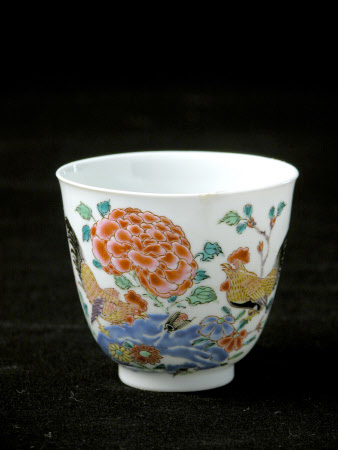Cup
Category
Ceramics
Date
1800 - 1900
Materials
Porcelain
Measurements
67 mm (Height); 75 mm (Diameter)
Place of origin
Jingdezhen
Order this imageCollection
Saltram, Devon
NT 870835
Summary
Cup, porcelain, round with gradually widening sides, made in Jingdezhen, Jiangxi Province, China, possibly 19th century, decorated in the doucai (鬥彩 ‘interlocking colours’) palette in blue, green, red, yellow and black enamels with a family of chickens among flowers and rocks.
Full description
The delicately decorated ‘chicken cups’ made for the Ming court during the Chenghua era quickly came to be venerated as a supreme achievement of ceramic art. Copies or recreations of those chicken cups were created during the reigns of the Kangxi Emperor (1662–1722) and the Yongzheng Emperor (1723–35) of the Qing dynasty. This cup is not decorated with the same level of finesse, but was nevertheless made in the tradition and genre of the ‘chicken cup’. In the Chinese cultural tradition, chickens signified harmonious family life, while the cock symbolised courage and benevolent care (which is one of the reasons why chicken cups appealed to the self-image of various emperors), as well as good luck in general. A cock standing on a rock could be read as ‘good luck to your family’, as the Mandarin word for ‘rock’, 石 shi, is reminiscent of the word for ‘family’, 氏 shi. In addition, the peony indicates another aspirational quality, ‘renown’ (Bjaaland Welch 2008).
Provenance
Given to the National Trust by Montagu Brownlow Parker, 5th Earl of Morley (1878-1962), 1957.
